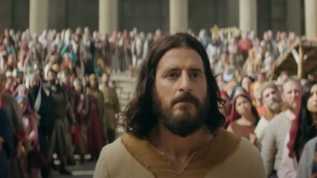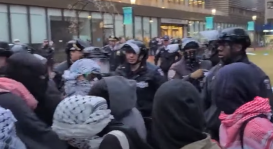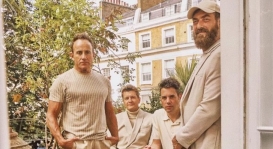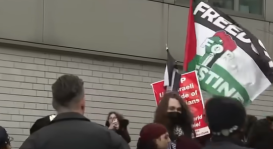RICHMOND, Va. (AP) - There were no jolly Christmas carols to be found at the Cannon Memorial Chapel. No festive branches of holly. No smiling faces or hearty wishes of happiness.
Instead, somber piano music echoed in the hushed church. Dead branches were lain on a table covered in blue cloth, representing the "winter of our souls." Men and women held each other and cried.
"This is not a traditional Christmas service," Chaplain Kate O'Dwyer Randall began, opening the church's nondenominational "Blue Christmas" service on Tuesday, which drew around 60 people.
The University of Richmond's chapel is one of many churches across North America offering Blue Christmas services this year, aimed at addressing a season that brings many people depression and grief rather than comfort and joy.
"Holidays in our culture are often about families, and families are not always happy institutions," said O'Dwyer Randall, who once worked as a grief counselor. "I think that particularly if you're facing a death or a divorce, the 'empty chair syndrome' becomes very real at this time of year."
Sharon Van de Walle feels that emptiness. Her husband of 40 years died suddenly earlier this month.
"This just is a preparation for Christmas, which is going to be rather difficult," she said tearfully.
Her friend, Anita McCabe, consoled her with a warm embrace.
"And it's a good place to have a cry and no one will mind," she told her friend.
Some churches refer to such programs as "Longest Night" services and hold them on the shortest day — and therefore, the longest night — of the year. This year, that falls on Thursday.
"I find in my ministry that there's quite a bit of pastoral work to be done in December. It just seems that whatever griefs or pain people have increase in this time," said Rev. Cynthia Maybeck, pastor of the Trinity Church of Northborough, Massachusetts, which has been offering "Longest Night" services for more than a decade. "Everything on the commercials is 'Ho, ho, ho, Merry Christmas, such a season of tidings and great joy' — and there's a lot of people whose hearts are breaking."
While some may find the "Blue Christmas" concept unusual, it serves an important function, said O'Dwyer Randall, who lost her brother two years ago and feels the grief more acutely at Christmas.
"I think something people don't think about around grief is they just want to avoid it," she said. "The biggest sigh of relief for people who are grieving comes when you name it. When you say, 'Hey, you're probably having a hard year.' When you say the person's name."
Her sermon Tuesday drew a parallel between the journey toward hope and the three wise men, who walked through cold and darkness toward the light of a star.
Later, she and others placed blue flowers on the dead branches, symbolically transforming them into something blooming and alive.
Frank Minter, 21, gazed up at the light streaming through the church's circular stained glass window. His mind was on his mother, who died unexpectedly last month after a battle with multiple sclerosis.
"We're not sure how the holidays will play out," he said softly. "So this was a chance to enjoy the holiday season, because this is certain. And in uncertain times, even a little bit of certainness is helpful."
This is the first Christmas 77-year-old Charles Minter Jr., will have to celebrate without his wife Barbara, whom he was married to, he says with a sad smile, for "57 years, four months and three days." They married just 19 days after they met. In May, she succumbed to cancer.
"I hate the holidays. I see the lights and Christmas — I just get the chills," he said. "I hope this is gonna help."
Copyright © 2006 The Associated Press. All rights reserved. The information contained in the AP News report may not be published, broadcast, rewritten or redistributed without the prior written authority of The Associated Press.







